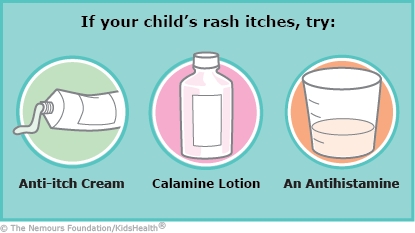Kids with Gianotti-Crosti syndrome have a rash that may be itchy. They may also feel tired and have a low fever, diarrhea, or swollen lymph nodes (glands). Most often, Gianotti-Crosti syndrome happens as kids are recovering from an illness (such as a cold or stomach virus). It gets better without treatment. The rash improves within 4–8 weeks and fully clears up within about 6 months.


Follow your health care provider's recommendations for:


Your child develops serious problems from the illness that led to Gianotti-Crosti syndrome, such as:

What causes Gianotti-Crosti syndrome? The cause isn't clear, but doctors think it involves the body's immune (germ-fighting) system.
What does the rash look like? The rash usually appears on the cheeks, buttocks, arms, and/or legs. Less often, it shows up on the belly, chest, or back. It has many small pink or brown bumps that might turn into blisters or purplish bumps. The rash may get worse in the first few weeks, and then goes away fully within 1–2 months.
Can other problems happen? Gianotti-Crosti syndrome doesn't cause other problems. Sometimes, the illness that caused it can lead to more serious problems. But this is rare.
When can my child return to daycare or school and activities? The Gianotti-Crosti syndrome rash can't spread to other people. When your child is no longer contagious from the illness that caused Gianotti-Crosti, they can return to daycare or school and all activities.